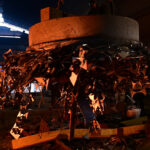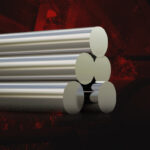Why pay additional once Induction will provide identical quality?
Alloy steel is alloyed with a spread of parts in several amounts so as to boost its mechanical properties. There are a unit low and high alloy steels however since the precise definitions of every of those haven’t been altogether specified, most consultants check with low alloy once talking regarding any alloy steels. As a general rule, this sort of steel is factory-made either through the electrical arc chamber method or the electrical induction chamber method. each have similarities and differences; below area unit a number of the comparisons between these 2 processes.
Nitrogen Content
When it involves atomic number 7 content, it’s higher once creating steel through the electrical arc chamber method than with the induction chamber method. this can be as a result of the arc chamber ionizes the atomic number 7 molecule to atoms which will be absorbed by the liquefied steel. With induction furnaces, the atomic number 7 content is lower though the element content is higher. Finally, the alloy fast life price is lower within the induction chamber method than the arc chamber method. The element will then be controlled via Vacuum Degassing.
Other Aspects
Here are a unit another variation between these 2 processes:
Alloy part smelting: The induction chamber includes a higher metal recovery rate than the arc chamber.
Alloy part smelting burn-out ratio: this can be lower within the induction chamber method than the arc chamber method.
Environmental concerns: Induction furnaces area unit higher for the setting, partially owing to arc chamber steelmaking ends up in heaps of waste residue, exhaust gas, noise, and energy.
Since no atomic number 6 electrodes area unit utilized in AN induction chamber there’s no carbon develop.
In AN induction chamber because of Eddy current churning impact, the liquefied steel is circulated mechanically by magnetic force action therefore the homogeneous product is ensured within the minimum time. It conjointly helps to stir the charge materials and creates optimum heat transfer condition for melting of the charge materials.
Slag
The electric arc chamber is stronger once it involves dephosphorization than the induction chamber is. With the induction chamber, the dross is cold and therefore the temperature of the dross is maintained by liquefied steel. With the arc chamber, the dross is hot and therefore the chamber itself keeps it hot. The arc chamber will complete the dephosphorization by the chamber dross, that conjointly permits for enough enlargement for the deoxidation method. this can be why the power of the arc chamber to de-phosphorite is healthier than the induction chamber. Arc is most well-liked once phosphorus needs area unit but zero.015.
As a general rule, arc furnaces area unit totally different from induction furnaces once it involves the charged material, that is directly exposed to an electrical arc. additionally, this that flows within the chamber terminals passes through the charged materials. it’s doable to use a large style of charged material in arc furnaces whereas in induction furnaces the charged material depends on the ultimate grade of the fabric to be factory-made.
Does this mean that one in all these processes is healthier than the other?
Not really. Arc furnaces area unit sometimes in giant batches ranging from 25000kgs and on top of capability, whereas induction furnaces may be found whilst low as 500kg capability therefore it’s less expensive in smaller batch sizes from 500kg to 20000kg batches.
Melting in arc chamber is essentially followed by ladle purification then vacuum degassing to form the ultimate steel whereas in induction it’s doable to not do the purification and degassing and come through the chemical composition within the induction chamber compromising the ultimate quality of steel. This ends up in a general perception of the standard of steel in induction vs arc. However, given the induction chamber method conjointly will the ladle purification and vacuum degassing, steel created induction is far cheaper than created in arc serving to users save huge prices and conjointly order smaller batches.
Further, since no element is lanced within the induction chamber the compounds formation is a smaller amount therefore inclusions area unit less; conjointly the tub is unendingly lined by dross therefore less oxide formation.
Even though there are a unit bound inherent inclusion generations throughout the varied reactions happening, that is true for each IF-> LRF-> Venus’s curse and EAF-> LRF-> Venus’s curse routes. In both, the method routes correct dross in LRF, effective de-oxidation/desulphurisation/ VD/ Soft inert gas effervescent can manufacture sensible quality clean steel.
Also, in EAF at the side of Steel Scrap, Pig Iron, Sponge Iron(DRI) area unit used that area unit having high impurities & oxides and any element is blown to soften the warmth. thus, the burden of impurities, inclusions area unit high in EAF melting and later on additional efforts area unit needed within the purification method to provide clean steel. At identical time within the induction, route heats area unit liquid with elite scrap with none blow of element leading to a burden of impurities/inclusions area unit less thus higher purification. therefore, as long because the steel is ladle refined and vacuum degassing once induction melting, the standard of steel is at par with arc chamber steel.
For Any Product Related Queries
Contact Us Now




